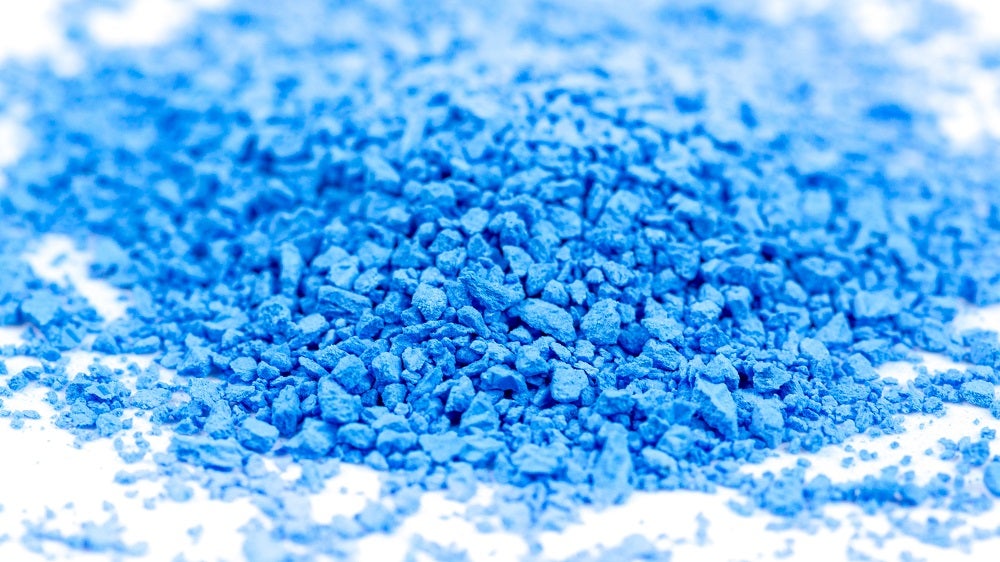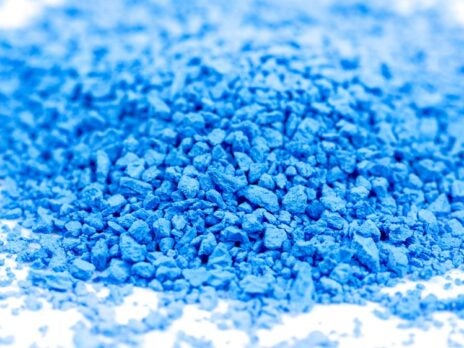
Starting as a technology historically reserved for moisture or heat sensitive products, roller compaction has evolved to become a widely used granulation technology with broad applications. The dry granulate is either an intermediate product to be further processed into tablets, or it already represents the final bulk product to be packed in sachets, pouches, blister packs, plastic bottles or canisters, or used in the production of tablets and capsules.
Main reasons for granulation
The main purpose of dry granulation is to increase the bulk density of powders and increase the particle size to ensure a better flow of distributed material, in turn resulting in better processability. In pharma, the goal of dry granulation is often to achieve a more uniform tablet.
Granulated powder blends become more homogeneous, avoid segregation and increase content uniformity. Granulation also reduces dust and fine particles, especially for bulk products, resulting in little or no material wastage and low dust exposure.
Industries using roller compaction
Whenever granules of consistent and high product quality are required, variable gap roller compactors using sophisticated process controls are needed. While the pharmaceutical industry is still the key market with 95% of all compactors, GERTEIS roller compactors can also be found manufacturing a wide range of products in the food and chemical industries (Figure 1).

Application of dry granulation in pharma
The number of products being manufactured using GERTEIS roller compactors continues to increase steadily, as this granulation method has proven to be one of the most economical. It is continuous, has a relatively large throughput, requires little floor space, needs very little energy and benefits from the absence of granulation liquids and drying equipment.
Roller compaction can be applied to a wide range of products. Many generic drugs, including Metformin, Ibuprofen, antihypertensives and antibiotics, are dry granulated. It is becoming more and more common, however, for proprietary products to be developed with dry granulation right from the beginning. The range includes blockbusters such as Metformin, but also orphan drugs like Bosentan.
Although roller compaction is a continuous manufacturing process suitable for both large and small batch sizes, almost all products are manufactured in batch format. The reason for this is that there are currently few products that have been approved as a fully continuous manufacturing process. One example, Vertex’s Symdeko, was approved in 2018 by the US Food and Drug Administration (FDA) having dry granulation integrated into a continuous manufacturing line.
In addition, Symdeko is a combination of two active pharmaceutical ingredients (APIs) used for the treatment of cystic fibrosis, demonstrating that candidates for roller compaction are not limited to single API products. Other examples of API combinations can be found within the antihypertensive drugs such as trandolapril and verapamil or valsartan and hydrochlorothiazide (HCTZ).
The drug load for dry granulation formulations ranges from very high (>90% for Metformin or Ibuprofen) to very low (<1% for cabergoline). For formulations with a high drug load, the properties of the API become crucial, and it is not always possible to achieve efficient compaction with such high drug loads. For very low drug loads, the challenge lies in the uniform distribution of the API throughout the whole blended batch.
Roller compaction can be used for both immediate and sustained-release formulations and can also be used in the manufacture of effervescent formulations in one blend without separating the carbonate salts and the acid components. This reduces the effort of manufacturing two separate batches of wet granulate to only one manufacturing step.
Even if a substance was originally developed as wet granulate, it is often possible to change the granulation method to dry granulation. Since this usually comes with registration changes, we recommend a business case calculation and a feasibility study as the basis of further decisions. Successful changes from wet to dry granulation have already been performed with metformin, ibuprofen or triamterene and HTCZ. Table 1 gives an excerpt of APIs processed by roller compaction.

HPAPIs
Driven by the need to contain and handle high potent APIs (HPAPIs), roller compactors with different containment levels have been developed. Various leading CDMO companies, including Almac Pharma Services, Catalent Pharma Solutions, Fareva, Lonza and PCI Pharma Services, have high containment roller compactors from GERTEIS in their manufacturing line. These compactors can achieve containment levels of less than 0.1µg/m³ (OEB 5 level).
Summary
The examples above show that roller compaction with GERTEIS technology can be used for a wide range of products and technologies and is not limited to moisture or heat-sensitive products. Various industries rely on consistent product quality and sophisticated process control.
In the pharmaceutical industry, a large variety of formulations can be processed using roller compaction: batch or continuous, high-containment, proprietary or generic, blockbuster or orphan drug, high or low drug load, immediate or sustained release, API combinations, and many more. Roller compaction is a versatile and efficient method that saves time and money.



